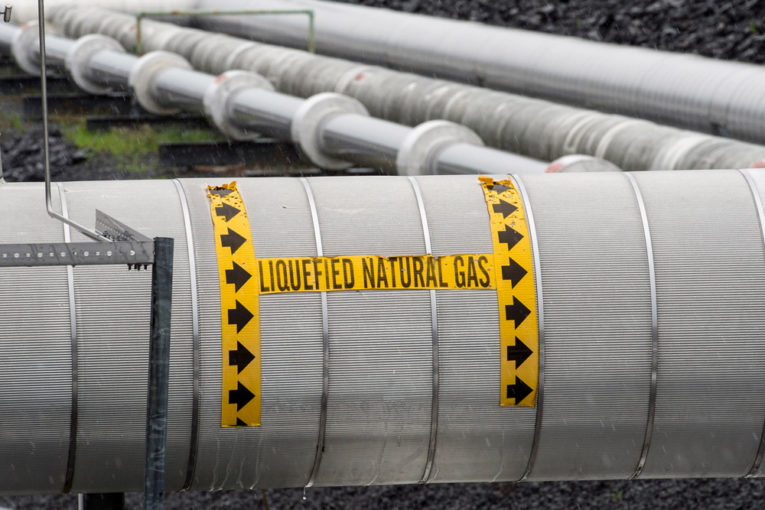
U.S. President Donald Trump may be helping to revive Canada’s dream of a liquefied natural gas export industry to supply growing markets in Asia.
The tariffs Trump formally ordered against US$50 billion in Chinese goods threaten to raise construction costs for LNG projects in Texas and Louisiana, providing a leg up to rival projects on Canada’s Pacific Coast. With a global gas glut tightening faster than expected, Royal Dutch Shell Plc and its partners in a proposed British Columbia complex are closing in on a final investment decision.
“We’ve got this world-class resource that can produce at very low costs,” said Jackie Forrest, senior director at the ARC Energy Research Institute in Calgary. “I think eventually we’ll see a project go forward. Economics always talk.”
LNG Canada — a $40 billion (US$31 billion) partnership led by Shell that includes PetroChina Co., Korea Gas Corp. and Mitsubishi Corp. — envisions an export facility in Kitimat that could eventually ship 26 million tons a year of super-chilled gas.
The group’s twice-postponed investment decision is now expected by the end of this year. The province on Thursday announced tax breaks and other cost-reducing measures that could save the partners $6 billion over 40 years. The catch is they have to greenlight the project by Nov. 30 to capture those savings.
Big Chunk
LNG Canada’s complex has the potential to ship a quarter of the gas currently produced in Western Canada, Forrest estimates. That’s critical because the lack of an outlet to overseas markets means Canada’s energy exports are sold almost exclusively into the U.S. at depressed prices.
Canadian producers are hopeful. “From what I can see, I think there’s a lot of optimism that they’ll make a positive final investment decision,” said Cenovus Chief Executive Officer Alex Pourbaix, whose company extracts gas at its Deep Basin deposit straddling British Columbia and Alberta. He commented during an interview at a Houston energy conference earlier this month.
A price-killing oversupply threw the economics of LNG exports from Australia to Russia to Mozambique into question in recent years. Malaysia’s Petroliam Nasional Bhd. and Chinese state-controlled producer CNOOC Ltd. canceled developments worth tens of billions of dollars last year, decisions that all but suffocated Canada’s dream of becoming an LNG heavyweight.
Yet that glut may not be so big after all. With demand growing at the fastest pace since 2011, the projected oversupply is retreating, according to Bloomberg New Energy Finance. Wood Mackenzie Ltd. sees the market for new gas suppliers opening around 2022, two years earlier than earlier estimates.
In Jeopardy
Protectionist trade volleys could complicate which projects capture the opportunity.
Tellurian Inc. warned last week that steel tariffs could “significantly increase” the cost of its proposed US$15.2 billion Driftwood LNG plant in Louisiana. Freeport LNG’s project under construction in Texas is far enough along to escape the duties, but CEO Michael Smith said he worries that if the tariffs spark a trade war with China, the project could suffer because China is a potential long-term buyer of the gas.
That risk doesn’t appear to have registered yet with the Trump administration. Commerce Secretary Wilbur Ross, speaking Thursday after his boss levied tariffs on Chinese imports, said it would be “very logical” for China to buy more U.S. LNG.
“From their point, it would be very logical to import more of it from us, if for no reason other than to diversify their sources of supply,” Ross said in an interview with Bloomberg TV. “It would also have the side effect of reducing the deficit.”
Bloomberg.com
You can read more of the news on source
